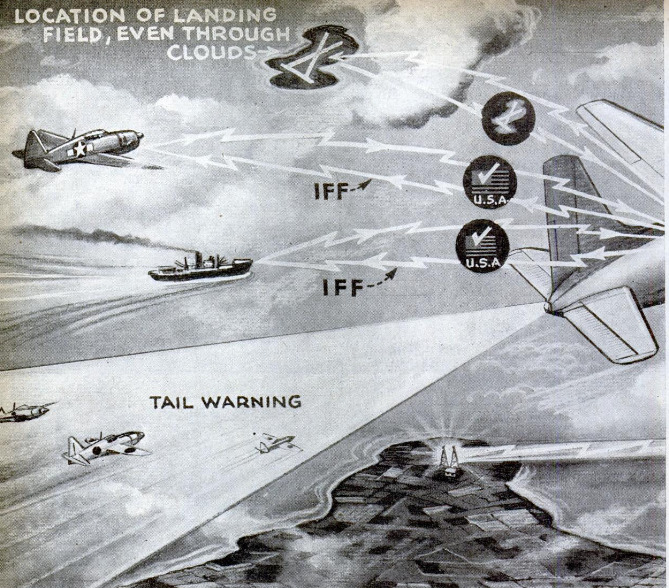-
Title (Dublin Core)
-
Magic eye that sees invisible
-
Article Title and/or Image Caption (Dublin Core)
-
Magic eye that sees invisible
-
extracted text (Extract Text)
-
RADAR sees all, hears all, and tells all,”
an AAF pilot once remarked. “It has |
penetrated everything but the thick veil of |
secrecy behind which it has been screened.” |
Now that the boys in the Pacific are even
using radar to fish with in their spare time,
its story has come crackling through cen- |
sorship, too.
You've seen a searchlight throw a long,
focused beam of light into the sky. It
fades away into the darkness if it does not
hit anything, but if the light strikes an air-
plane, some of it is reflected back to your
eye. Suppose that this searchlight used
radio waves instead of light; that it sent
these waves out at rapid intervals; that it
caught the waves whenever they hit an
object and bounced back; and that it com-
puted the distance they had traveled by
noting how long the round trip took them.
That's the essence of radar (RAdio De-
tection And Ranging).
The radar operator (RO) on the ground
at a fighter-control station on Okinawa an-
nounces the detection of an approaching
Jap bomber by radioing one word to a
Black Widow's crew: ‘‘Trade.” He then
tells the men in the night fighter 65 miles
away the direction and distance of their foe:
“Climb to 11,000. Vector, 2-9-7. Range,
42 miles.”
As the Black Widow banks around to a
northwest course -and surges forward at
350 miles per hour, the radar operator on
the ground can note its progress as well as
that of the Jap plane. At the same time,
another RO in the glassed-in rear of the
Black Widow's fuselage adjusts his shorter-
ranged, airborne-intercept (AI) radar set.
Invisible radio detection beams are thus
shot at the Jap from both the ground sta-
tion and the AAF night fighter. Officers
on the ground chart the courses of the two
aircraft on a tablelike plotting board; as
the planes come closer together, another
code word is radioed to the fighter:
“Punch.”
The gunner in the Black Widow, mean-
while, makes the adjustments necessary to
enable the fighter’'s radar apparatus to aim
and fire its turret machine guns at the
enemy.
“Pilot from radar,” says the RO in the
night fighter when he sees a “blip” of light
on the screen of his radar that tells him the
waves from his apparatus have begun to
bounce back from the Jap. He speaks over
the plane's intercom, “Target, 11 miles.
Bearing, 20 degrees.”
“Roger,” says the pilot, and proceeds ac-
cordingly.
“Judy,” sings the radar operator in the
Black Widow to his colleague at fighter con-
trol on the ground; this means that the
fighter has spotted the Jap bomber and is
taking on the job of destroying it.
Now the RO in the Widow must watch
the screens, or radar scopes, on his instru-
ment panel to keep from losing the image
of the target. There's a penalty for this;
he will be demoted to ground duty if he
loses a target three times. As the Widow
closes in on the Jap in the darkness, he ad-
vises the pilot and gunner: “Dead ahead.
Range, one mile. Mark, gunner.”
That's the gunner’s signal to flip a switch
that brings the automatic airborne gun
layer (AGL) into operation. It will sight
and fire the four machine guns at the right
instant, even though the men in the Black
Widow have not seen the target with their
eyes.
‘The roar of the two big engines is broken
by two short bursts of fire from the .50
caliber guns, directed by the fighter's radar
eyes. Flames reveal a Japanese Betty
medium bomber, with a kamikaze, or baka
bomb, snuggled beneath its belly. The
Widow may swing around to let it have a
few bursts of visually sighted fire from the
four 20-millimeter cannons in her fuselage.
The result will be reported in one word,
spoken into the microphone by the RO in
the Widow and heard by the men on the
ground: “Murder!”
That is how radar is used in Black
Widows. The single-seater Corsair and
Hellcat carrier fighters have a different
kind of radar equipment (ATA instead of
AI) which enables the pilot to do everything.
The target appears on the radar scope of
this apparatus as a large dot of light, and
the pilot flies so as to keep that dot lined
up. in the center of his scope. The size of
the dot that is the enemy plane tells him
when he is within range.
The heart of radar is a cathode-ray tube,
shaped like a trumpet, through which
electrons are shot. These tiny negative
charges of electricity we call electrons
bombard and illuminate a fluorescent screen
on the flared, wide end of the tube. Alter-
ations in the current result in the formation
of light patterns on the dimly glowing
screen. The nature of these patterns, and
the alterations in the electron stream that
cause them, is determined by the very short
radio waves that bounce back
from. the detected object.
Since the speed of these pulses
is the same as the speed of light
—which can flash the 186 miles
from New York to Baltimore in
one thousandth of a second—the
time it takes the waves to go
from the transmitter antenna to
a distant object and back to the
cathode tube is extremely brief,
but it is measurable. This meas-
urement gives the distance, or
range, of the target. The direc-
tion, or bearing, of the located
object is revealed by the direction
in which the radar antenna is
aimed. Several types of antennas
are used.
The Japs do not seem to have
the laboratories and the materials
to put their radar equipment on a
par with American sets. Their
present warning and fire-control
devices compare only with early
1942 American radar. Their air-
borne equipment appears to be
even less efficient. However, they are mak-
ing intelligent use of what they have.
The Germans, too, got off to a late start
in radar development; but, when V-E Day
arrived, their warning and fire-control ap-
paratus was nearly as good as ours. The
Luftwaffe did not employ airborne sets as
widely as did the Allies.
The British led in the development of
what they then called ‘“radio-location.”
They introduced many of the present appli-
cations, such as navigation and bombing
through the overcast. But their devices had
many limitations, which were overcome
largely by American scientists and Army
and Navy technicians. Although most of
our radar experimentation has been carried
out as a joint operation, U.S. experts have
made more rapid improvements, and more of
them. Today, we are farther advanced than
any other nation, thanks also to industrial
plants such as RCA, Bell, General Electric,
Western Electric, Westinghouse, and Philco
—to name only a few.
Amazing strides have been made since we
used the long-wave, broadcast-frequency
types at Pearl Harbor, where Private Joseph
Lockhard (officially off duty) detected the
unidentified planes that turned out to be
Japanese. This long-wave equipment was
also used during the epic Battle of Britain,
and is credited—along with the RAF—with
saving England. The long broadcast waves
provided good range and a wide coverage of
the sky. However, the very nature of these
radio waves that permitted RO's to scan
wide sectors resulted in the formation of
blind spots, particularly close to the
ground.
Much of the newer equipment, brought
into use since 1942, is of the microwave
type. These extremely short waves—meas-
ured in terms of megacycles and centi-
meters, instead of kilocycles as in your
radio—do not scatter like broadcast trans-
missions and have a much better bouncing
quality, or “mirror effect.” The combination
of long- and short-wave radar has been used
with great effectiveness. The microwave ap-
paratus covers the blind spots left by the
long-wave sets. The latter, like a widely
focused searchlight, is effective for finding
the target; but the microwave equipment is
used to better advantage, like a higher-
powered, narrower-beamed spotlight, to put
the finger on the enemy after he is first de-
tected.
Such detection was the first use to which
radar was put; it was purely a device with
which the enemy
‘bombers could be detected soon enough for
defending fighters to intercept them. After
the fighters took off, they had to be guided
along a course of collision or interception
80 that they could find the bombers in the
dark. During the Battle of Britain, the
night fighters did their best work after mak-
ing visual contact by the light of the moon
or in the reflected glow of burning London.
In the Black Widow episode at the be-
ginning of this article, part of the trick was
identification. An airplane or ship looks the
same in the radar operator's scope, or
“scan,” whether it is friend or enemy. This
uncertainty is eliminated by auxiliary radar
apparatus known as “IFF” (Identification
of Friend or Foe). All Allied aircraft and
vessels carry a specially designed radio
transmitter and receiving unit called a
“transpondor,” whether or not they are pro-
vided with any other radar equipment.
‘When we detect something with our radar,
operators send out a challenging signal that
says, in effect, “Give the password and be
recognized.”
‘This challenging beam enters the receiv-
ing unit of the plane or ship being queried
and passes on to the transmitting unit to
spring a triggering device. The automatic
action causes a friendly plane’s transpondor
to emit a series of properly coded signals
which are picked up on the challengers
scope. If it is the right code of the day, or
the hour, a certain pattern is then formed
on the scan of the questioning radar set. If
no pattern, or the wrong one, appears, the
detected object is considered hostile.
IFF sets can also be used as an aerial
guide or beacon to lead other planes without
the enemy's knowledge. By setting a switch,
the RO causes the transpondor to send forth
a series of steady signals that say to other
planes—merely through the pattern on the
scan—“Come here,” or “Follow me.” Craft
tuned to the proper frequency can “home”
on this plane just as they would head toward
a beacon on the ground. Thus, it is pos-
sible for a pathfinder or a formation leader
to beckon other planes to the spot where
he locates the enemy fleet in hiding without
tipping his hand to the foe. When a pilot
is forced down, this homing signal can also
be used to attract rescuers.
Paratroopers and glider units use a con-
densed version of IFF for landings in hos-
tile country. A pathfinder transport locates
the most suitable drop zone and one or two
paratroops are dropped carrying with them
a light, battery-operated radar set. This is
a small beacon, even more compact than a
hand talkie, with a short whip antenna that
is set up as soon as they land. Aboard the
transports that follow, flashing red lights
notify pilots and jumpmasters when the drop
zone has been reached.
“Racons” are probably the largest RAdar
beaCONS in use. Twin transmitter towers
are permanently located so as to permit a
plane to home on their signals or use them
for plotting position. The beacons usually
operate only when the beams from an air-
plane’s search radar come in contact with
them. These pulses automatically trigger
off the beacon transmitters in the two
towers.
Complete networks of racons now make
possible a new system of long-range air
navigation. The plane's special receiver,
manned by the navigator instead of the
radar operator, is tuned to catch these
beacon beams. The pulses are emitted as
coded signals, and each beacon has its own
identifying code. In the radar scan, the
plane's navigator can determine by the light
traces the identifying number of the beacon
station's beam. Each beam’s path is repre-
sented as a curved line on a chart. The
navigator then tunes in another station to
get a cross bearing. Where the lines inter-
sect is the position of the plane.
For the most part, these beacon stations
are set up along coastlines; they do not
function over long distances inland because
of the many “permanent echoes” established
by hills and other terrain features. The
guiding signals can be picked up at night
as far away as 1,200 miles. This new sys-
tem is considered by many airmen to be
just as accurate and much quicker to apply
than the standard celestial avigation meth-
ods. It can be used in bad weather when
there are no planets visible. The stations,
each with its twin tower installation, are lo-
cated from 300 to 400 miles apart. Smaller,
intermediate “slave stations” with single
transmitter towers are spotted between the
main beacons.
There is also a short-range air-naviga-
tion system accurate enough to use for area
bombing. Stations with single-tower trans-
mitters are spaced close together and per-
mit fixes within a matter of yards. Both
the long- and short-range systems were
originated by the British and improved to
their present state of efficiency by Ameri-
can technicians.
The basic radar equipment for distant
reconnaissance and navigating is known as
the ASV (Air to Surface Vessel) search
set. This employs the fully rotating dish an-
tenna mounted in a radome. For this type
the RO has a circular PPI (Plan Position
Indicator) scope that provides him with a
maplike representation of the area below,
clouds and darkness notwithstanding. The
operator can discern land features such as
peninsulas, headlands, or islands as far as
150 miles away; ships can be picked up 50
miles distant, and a fleet can be spotted at
twice this distance. A switch is used to
open the center of the scope to reveal the
detail of targets close at hand. The newer
ASV sets, are so sensitive that a well-
trained RO can detect cloud formations and
weather fronts.
The use to which this search set can be
applied in bombing should be obvious. In
the dark of night, in fog, or through heavy
layers of clouds, the PPT tells the operator
what is below and thus enables him or the
navigator to see landmarks and spot the
bombing target. The regular search set is
used for these BTO (Bombing Through
Overcast) operations, in combination with
an H2X ranging unit and a bomb computer
that is part of the Norden bombsight that
accomplished such accurate visual egg-lay-
ing.
‘The city that is the target can be picked
up 50 miles away by the radar operator in
his PPI scan. He directs the pilot over the
intercom during the bombing run. As the
blob of yellow light and shadow that form
the target's pattern slide beneath a head-
ing line and ranging circle that are pro-
jected onto the PPI screen, the RO keeps
the bomber on course. When the line and
circle intersect, he releases the bombs. The
“eggs” can also be set for automatic release
when the proper point is reached.
In October 1944, when Flying Fortress
pathfinders led the formations to raids on
Vienna, Klagenfurt, and Munich, the Ger-
mans found out that no respite was to be
gained from cloudy skies over the Reich.
The Japs have since found out that even
their foul brand of weather is no guarantee
against Superfortress visits. “Micky,” as
the American version is called, is good for
BTO missions anywhere from 12,000 feet
to altitudes above 40,000 feet, if we ever
have to fly that high.
Another technique was developed by the
medium-bomber men of the bth Air Force
in the southwest Pacific for attacks against
Japanese shipping. Their LAB (Low Alti-
tude Bombing) equipment is connected with
the plane's regular set and consists of a
computer, a tracking unit, and a repeater
scope for the bombardier. LAB can be used
from any altitude between 50 and 2,000
feet at night or in conditions of low visi-
bility. And no one knows better than the
Japs, who tried to run merchantmen and
warships through our aerial blockade, the
efficacy of this automatic radar bombing
apparatus. LAB is operated in much the
same manner as the high-altitude BTO set.
When enemy bombers attempt to at-
tack our ships and ground installations, we
put radar to work defensively. Mobile radar
sets are hooked up with searchlight syn-
chronizers called “comparators.” The beams
pick up the planes and aim the lights at
them. Accurate antiaircraft fire depends
largely upon accurate ranging and compu-
tation of speed and direction. Radar can do
this as no mechanical computers ever could,
In the case of shipboard dual-purpose and
automatic 40-millimeter guns, the addi-
tional factor of the ship's pitch and roll
must be taken into account. This is done
through the use of gyro stabilizers that are
hooked up to the radar fire-control equip-
ment. Each type of gun aboard ship
usually has its own set and antennas; there
is one radar for the five-inch guns, another
for the 40-mm. guns, and gunnery officers
and radar operators and trackers for each
of the sets.
The story about radar being used to catch
fish is credible because of the effect of micro-
waves on the delicate sense organs of fish,
but radar has been accused of much that
is just not so. It will not make operators
baldheaded or sterile, nor will it cause RO's
to go crazy after being around the ap-
paratus for a time. One woman in the West
called a major of the 4th Air Force re-
cently to complain that ever since the AAF
put radar on training planes she had been
having trouble. When the planes flew over
her house, she said, their radar made her
telephone hard to hear, made the bedsprings
squeak, the radiators get noisy, and killed
all the pretty fir trees around the house.
When the time arrives for radar to cease
killing either fir trees or Japs, it will be-
come a boon to mankind in the one medium
most essential to international goodwill and
understanding —communication.
On land, at sea, and in the air, radar can
be applied to all sorts of postwar transpor-
tation. It will find its widest application in
the aviation industry, because of the three-
dimensional character of flying. The CAA
is experimenting at Indianapolis with a com-
mercial adaptation of the “BABS” (Blind
Approach Beacon System) device used by
the AAF and Navy for landing planes in the
thickest pea-soup fogs. Alrport control of-
ficers can be provided with a large master
scope that will show, even in bad weather,
all planes in the vicinity of the airport. Air-
liners and personal planes can carry their
own navigating and detection equipment to
make flying safer and easier.
Steamships equipped with radar naviga-
tional and detecting devices can maintain
faster schedules in bad weather, locate ice-
bergs and other obstructions, pick up shore
lines and shoals, and check on the location
of other vessels to avoid collision.
Railroads can apply radar for signaling,
the automatic stopping of trains when
tracks are obstructed, and locating trains
on a master board in the dispatching and
traffic-control offices.
Autolsts may find that radar devices will
enable them to drive at reasonable speeds
through fog and storms. One unit might
serve as a guide to keep the car on the road,
flashing a warning light when the driver
gets too close to the edge; another would
scan the road ahead for obstructions or
other cars.
Manufacturers can apply radar in a num-
ber of ways. Fisheries can make use of the
devices—and certain other apparatus which
is not strictly radar but closely allied to it
~—to locate and catch schools of fish with
this “electronic bait.”
Indeed, radar may be the most significant
contribution to the amazing new electronics
industry that bids fair to become one of the
keystones of modern living.
-
Contributor (Dublin Core)
-
James L. H. Peck (article writer)
-
Language (Dublin Core)
-
eng
-
Date Issued (Dublin Core)
-
1945-09
-
pages (Bibliographic Ontology)
-
65-71,210,214,222,226
-
Rights (Dublin Core)
-
Public domain
-
Archived by (Dublin Core)
-
Sami Akbiyik
-
Marco Bortolami (editor)
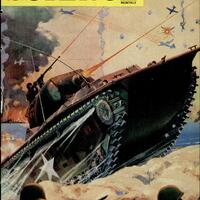 Popular Science Monthly, v. 147, n. 3, 1945
Popular Science Monthly, v. 147, n. 3, 1945
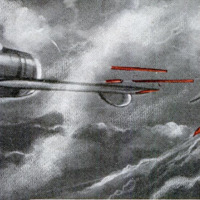 Screenshot 2023-01-30 112936.png
Screenshot 2023-01-30 112936.png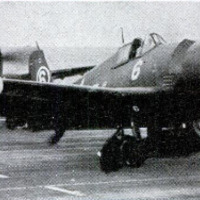 Screenshot 2023-01-30 112950.png
Screenshot 2023-01-30 112950.png Screenshot 2023-01-30 113003.png
Screenshot 2023-01-30 113003.png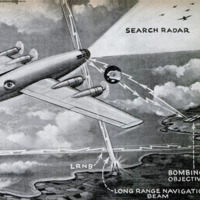 Screenshot 2023-01-30 113015.png
Screenshot 2023-01-30 113015.png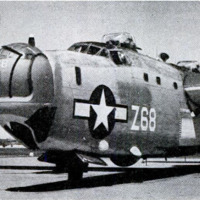 Screenshot 2023-01-30 113027.png
Screenshot 2023-01-30 113027.png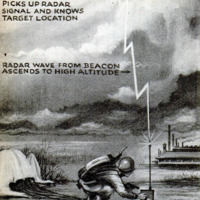 Screenshot 2023-01-30 113037.png
Screenshot 2023-01-30 113037.png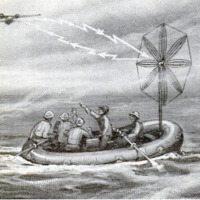 Screenshot 2023-01-30 113048.png
Screenshot 2023-01-30 113048.png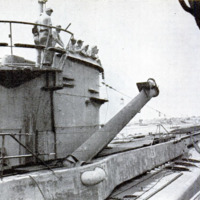 Screenshot 2023-01-30 113107.png
Screenshot 2023-01-30 113107.png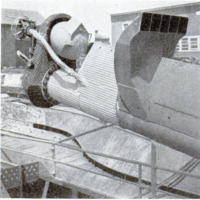 Screenshot 2023-01-30 113118.png
Screenshot 2023-01-30 113118.png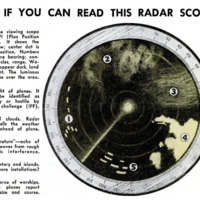 Screenshot 2023-01-30 113131.png
Screenshot 2023-01-30 113131.png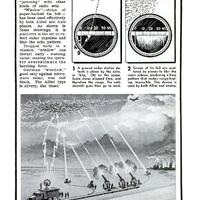 content (1).jfif
content (1).jfif


